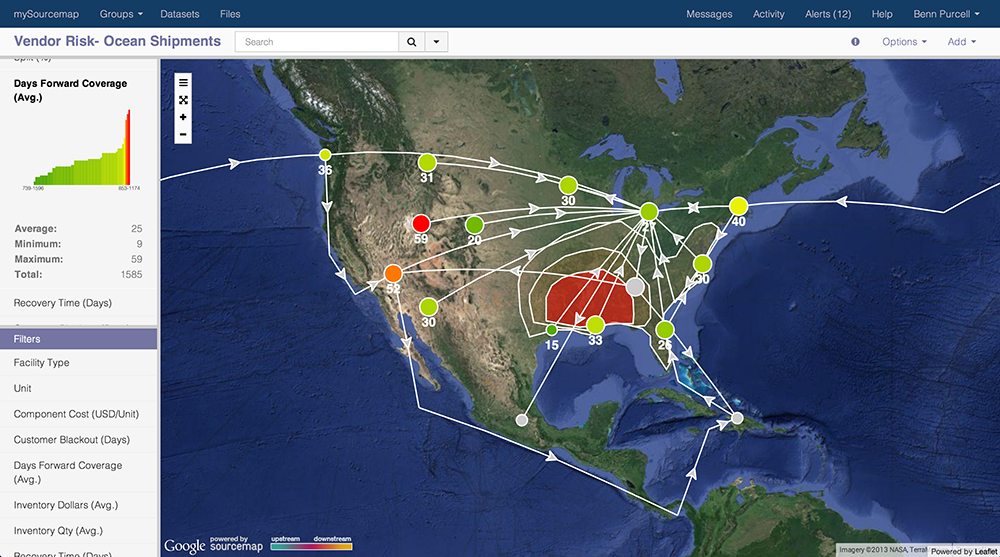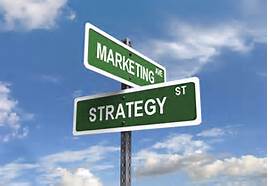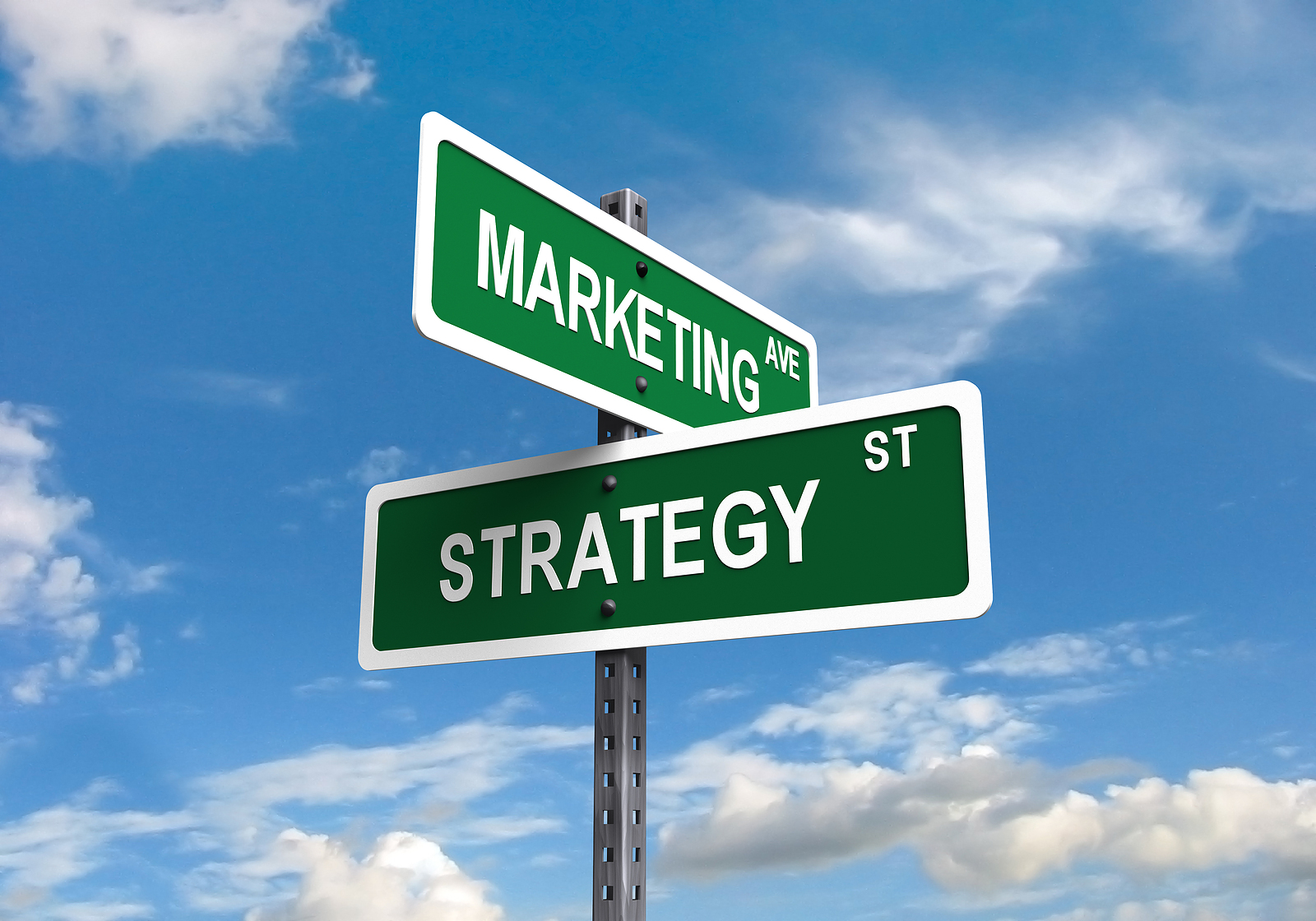
by Fronetics | Jul 20, 2015 | Blog, Logistics, Marketing, Social Media, Strategy, Supply Chain

Sourcemap: doing well by doing good.
Leonardo Bonanni’s company, Sourcemap, is doing well by doing good, and he’s helping companies to do the same. In working on his doctoral thesis at MIT, Leonardo Bonanni created a service that is good for the world on many levels – it saves companies money and it works towards sustainability through transparency. Bonanni is bringing the people what they want. Consider these numbers from recent surveys:
- more than 88% of consumers think companies should try to achieve their business goals while improving society and the environment
- 83% of employees would seriously consider leaving their job if their employer used child labor in sweatshop factories
- 65% would seriously consider leaving their job if their company harmed the environment
Bonanni’s innovative company, Sourcemap, helps clients visually map the supply chain route, from raw materials to end-users, providing unique and important visibility. Companies like Stoneyfield, Mars Chocolate, Fairphone, and Office Depot can see risks and disruptions in the supply chain in real time, act responsibly, promote sustainability, and please consumers who are increasingly curious and conscientious about materials sourcing.
The likes of the Wall Street Journal, Forbes, and The Guardian have taken interest in Dr. Bonanni and Sourcemap. Here he shares some insights with Fronetics on the growth of the company and how he won’t rest until mapping the supply chain is status quo.
What’s the most exciting thing going on at Sourcemap right now?
2015 is the year of supply chain mapping. When we started helping companies trace their products to the source, it was 2007 and the question was ‘why would we want to do that?’ Today it’s ‘how fast can we start?’ Whether it’s risk, sustainability, or simply finding more efficient ways to source products, companies need a big picture of the end-to-end supply chain. What’s exciting is how fast and far we help our clients get there – sometimes in as little as one day.
Tell me about how the maps are built. Are the maps on the free source platform built the same way as the maps on the enterprise platform?
Sourcemap started as a service for consumers to find out where products come from (free.sourcemap.com is still the only website where anyone can make a supply chain map, no training required). Users log in and map a supply chain – from raw material to end customer – as easily as drawing dots and lines on a Google map. Soon after the free website launched manufacturers approached us to see if we could help them figure out where their products come from. We had a lot of experience from serving millions of visitors through our free website, so we knew how to make a robust and intuitive interface for supply chain mapping. We adapted the technology to enterprise needs by adding company specific KPI’s, network analytics, and real-time reporting. The difference is that our enterprise users don’t draw the supply chains one link at a time. Their maps are automatically generated in near-real time from transportation, purchasing, and product lifecycle management databases.
Is it hard to convince businesses that there is an economic or competitive advantage to a utilizing a platform like Sourcemap?
It’s true that Sourcemap was originally built for sustainability, and it can be hard for companies to dedicate resources to long-term issues when short-term priorities come up every day. But our first success wasn’t helping companies be more sustainable in the long term. It was helping them tackle short-term crises, by developing a supply chain repository for emergency response and business continuity planning. Our clients were spending days and weeks to determine how a natural or human-made disaster was impacting any of thousands of suppliers worldwide. We brought that time down to minutes. Then supply chain managers started to see the benefit of knowing not just who they buy from, but who their suppliers buy from – and making decisions to consolidate or diversify supply, move inventories around, and decide when to in-source / out-source processes. These decisions represent huge savings in overall supply chain cost.
This is fantastic tool for companies who are proud of their supply chains, but what about those companies who aren’t, or who aren’t even fully aware of the steps and impact of their chain?
Over the years we’ve worked with companies big and small, with widely differing visibility into their supply chains. What we’ve seen is that the biggest benefit – the low-hanging fruits – are there for first-time supply chain mappers. These are companies that have expanded through acquisitions, are entering new markets or introducing new products – basically any organization that needs to account for a whole new way of doing business. Then, supply chain mapping is the easiest way to keep tabs on everyone in the supply chain and make sure that decisions are taken with an eye on the big picture.
In the years you’ve been doing this work have you seen a shift in consumer demand around the sourcing of materials and making of products? Is there increasing social pressure for companies to “do good”?
We’ve seen two drivers for supply chain sustainability and transparency: companies who want to attract the best talent, and brands looking to differentiate their product by providing information on its price, its composition, or its source.
Given that you teach at Columbia, I’m wondering if you see a difference in the passion, awareness, and attitude around sustainability with younger generations? Have you seen growth in the enrollment numbers in your classes?
I like to teach one or two evening classes a year (this Fall at NYU) to see how supply chain thinking is evolving as it becomes more mainstream. My class hasn’t changed much since it started in 2007, but the students have. Sustainability used to be a futuristic concern, and no one outside logistics departments ever talked about supply chains. Today there is a real desire among students to be social entrepreneurs, and part of that means thinking about products and services holistically – making sure that the social and environmental impacts are drivers of innovation, not just a nice-to-have. Enrollment has grown, and so has the number of departments where supply chains play a role: from engineering, architecture and design to business, public policy and international affairs.
Has social media played a role in the growth of the business and/or the operations of the business?
Sourcemap wouldn’t be here without social media. The fact that our supply chain maps can be embedded in other websites attracted over a million visitors in the first year. We saw brands embedding maps of their supply chains on their own websites, and we got a tremendous amount of traffic from being embedded and linked from the Huffington Post, Wired and Fast Company.
What are your ultimate goals for Sourcemap?
Supply chain mapping – knowing where products originate – gets easier the more companies do it. It requires information sharing, which means tighter collaboration between buyers and sellers. We’ve seen it become a requirement of purchasing departments: if you want to sell your products, disclose the raw material origins. That makes it easier to trust – and verify – the quality, the compliance, the sustainability of the product. Personally, I won’t rest until supply chain mapping becomes part of doing business as usual.
Dr. Leonardo Bonanni is Founder and CEO of Sourcemap, the supply chain mapping company. The New York-based startup offers enterprise software for companies to trace products, evaluate social, environmental and financial risks, and monitor improvements over time. One day soon you’ll be able to scan a product on a store shelf and be connected to the people who made it through the Sourcemap social network.
Leo is a supply chain transparency advocate named among the 100 Most Influential People in Business Ethics (2011) and America’s Most Promising Social Entrepreneurs (2012). He teaches sustainability at Columbia and at MIT, where he received his doctorate from the MIT Media Lab. He has a background as an architect, an inventor and a performer.
Fronetics Strategic Advisors is a leading management consulting firm. Our firm works with companies to identify and execute strategies for growth and value creation.
Whether it is a wholesale food distributor seeking guidance on how to define and execute corporate strategy; a telematics firm needing high quality content on a consistent basis; a real estate firm looking for a marketing partner; or a supply chain firm in need of interim management, our clients rely on Fronetics to help them navigate through critical junctures, meet their toughest challenges, and take advantage of opportunities. We deliver high-impact results.
We advise and work with companies on their most critical issues and opportunities: strategy, marketing, organization, talent acquisition, performance management, and M&A support.
We have deep expertise and a proven track record in a broad range of industries including: supply chain, real estate, software, and logistics.


by Fronetics | Jun 15, 2015 | Blog, Content Marketing, Data/Analytics, Marketing

It’s impossible not to recognize that the business world is changing. Whether it’s the fall of the travel agent as people migrate towards online booking, or the irrelevance of the compact disc as Spotify and iTunes changed the music industry, or how advertising is done. Outbound marketing, such as print ads, TV ads, banner ads, trade shows, telemarketing, and direct mail are no longer what consumers are requiring. According to Forbes, many brands are moving their advertising budgets from television to online videos. The Content Marketing Institute reports that 8 out of 10 people identify themselves as blog readers, and 23% of all time spent online is spent on social media sites. With the rise of the blog, companies have gotten smart about how to reach their current and potential consumers.
In the B2B world things are changing, too, with many executives wanting to gain information through other mediums. The Content Marketing Institute also reports that a majority (80%) of business decision-makers prefer to get information from articles rather than through advertisements.
We know that inbound marketing is effective in garnering consumers’ attention. It’s aligned with a generation of people who want to be educated about the products they’re buying and who are willing to search for those products online. Even with all of this known, it’s important to ask: what is the ROI when it comes to content marketing?
According to Search Engine Journal, inbound leads cost 60% less than outbound leads. In the Harvard Business Review article, How to Profit from “Lean Advertising”, the shoe company DC Shoes is profiled as a model for inbound marketing. In an industry where star athletes are profiled in big-production advertisements via TV commercials, billboards, and magazine ads, the skateboard shoe company decided to take a different route. According to the 2013 HBS article, “Over the past four years they have gotten more than 180 million views—and in 2011 alone, sales jumped 15%. One was YouTube’s most-shared video of 2011; another garnered a million views in its first 24 hours. Paying online media for this type of exposure would cost upward of $5 million.”
Like any new tack in business decisions, relying on case studies from other businesses is helpful, but cost needs to be considered. In order to calculate ROI the cost of content marketing needs to be assessed:
- salaries (if going in-house)
- marketing agency or contractor services
- additional overhead
- distribution costs
- design and publication software
After those costs have been calculated, the next step is to subtract that number from the revenue generated. The Guardian has put forth its simple content marketing ROI calculator:
(Revenue Generated – Cost of Content Marketing) / Cost of Content Marketing = ROI
According to the newspaper, “A simple calculation could say that you drove 1000 visits through a piece of content, and Google Ads would have cost £1 per click, e.g. £1000 to equal the same. If the content only cost £500, you have a saving!”
But with most seemingly simple things, there’s complexity underneath. Dig deeper and ask more questions. Is the money you’re spending on inbound marketing deterring other, less obvious, costs? Would it have cost you more through outbound marketing methods to achieve that same level of visibility than through inbound marketing solutions? Is inbound marketing bringing in customers or closing a deal more quickly than alternative methods (time is money, after all)? Is inbound marketing cutting down the need for staffing in other areas, such as support staff to manage inquiries or support calls?
Some incalculable values from inbound marketing, like consumer preferences, content intelligence, customer relationship strategies, and branding can be hard to tie to a number, but over time you will see that your ROI will become more clear to you as you generate leads, turn leads into customers, and see the result in the form of money gained (American dollars or British pounds!).

by Fronetics | Apr 30, 2015 | Blog, Strategy, Supply Chain, Talent

Why “sexy” is a perfect fit for the supply chain.
Why do we apply the word “sexy” to things that are non-sexual, like, for example, the supply chain? Sexy is synonymous with the words exciting, appealing, fascinating, desirable, provocative. It’s a buzzword for something popular and attractive. When people think of the supply chain, do they think of the word “sexy”? Many might say no, but here’s an argument as to why it’s a perfect fit.
Are Apple products sexy? Are designer clothes sexy? Is the Audi A5 sexy? Are oysters sexy? Many people would answer yes. Substitute your favorite and most desired technology, clothes, cars, and food, and you will find that they are all products of the supply chain. Senior Vice President of Research at SCM World, Mark Davis, is leading the charge in pointing out the vibrancy, attractiveness, and desirability of the supply chain. A study conducted by SCM World shows how consumers view the supply chain. Here’s what they found:
- Very few people react to the supply chain in a negative or strongly negative way.
- People aged 16-25 view the supply chain as positive or strongly positive, which is more optimistic than any other age groups reported.
- People aged 56 and older reported the highest level of unfamiliarity with the supply chain, while people aged 16-25 reported being most familiar with the supply chain.
- People aged 16-25 were the least neutral compared to other ages in their reaction to the supply chain.
Given what we know about the Millennial generation, this makes sense, and it could be good news for the supply chain. Millennials are optimistic, achievement-oriented, social, collaborative, tech-savvy, and value-based. Their buying patterns are informing everything we do and it should be stressed that there are many of them. According to the New York Times, “there are more 23-year-olds — 4.7 million of them — than any other age, according to census data from June. The second most populous age group was 24, and the third was 22. There is no official age range for Millennials but the generation generally is defined as being born between the early 1980s and early 2000s. By 2020, they will account for one-third of the adult population.” We think of the Baby Boomer generation as the largest age group, but at 24% they are just surpassed by the Millennial generation at 26% of the population.
Often we equate what is sexy with youth. With the Millennial generation—our youth— poised to make up 50% of the workforce by 2020, the supply chain could harness their optimism and interest. According to Mark Davis, “we should all be highly optimistic about the future. Millennials are strongly positive about supply chain, which presents a unique opportunity for us to inspire them to choose it as a career. We have to keep them interested by sharing stories of how supply chain is innovating to solve the world’s three fundamental issues: health, hunger and environmental sustainability.”
Aside from being supported by Millennials, why else would we consider the supply chain “sexy”? Some of the most innovative work is being done in the supply chain, including enterprise resource planning, cloud-based computing, use of big data, and involvement in the Internet of Things. If the supply chain can continue to harness technology, make smart hires, and attract Millennials, the word “sexy” could apply for a long time.

by Fronetics | Apr 30, 2015 | Blog, Strategy, Supply Chain, Talent

Why “sexy” is a perfect fit for the supply chain.
Why do we apply the word “sexy” to things that are non-sexual, like, for example, the supply chain? Sexy is synonymous with the words exciting, appealing, fascinating, desirable, provocative. It’s a buzzword for something popular and attractive. When people think of the supply chain, do they think of the word “sexy”? Many might say no, but here’s an argument as to why it’s a perfect fit.
Are Apple products sexy? Are designer clothes sexy? Is the Audi A5 sexy? Are oysters sexy? Many people would answer yes. Substitute your favorite and most desired technology, clothes, cars, and food, and you will find that they are all products of the supply chain. Senior Vice President of Research at SCM World, Mark Davis, is leading the charge in pointing out the vibrancy, attractiveness, and desirability of the supply chain. A study conducted by SCM World shows how consumers view the supply chain. Here’s what they found:
- Very few people react to the supply chain in a negative or strongly negative way.
- People aged 16-25 view the supply chain as positive or strongly positive, which is more optimistic than any other age groups reported.
- People aged 56 and older reported the highest level of unfamiliarity with the supply chain, while people aged 16-25 reported being most familiar with the supply chain.
- People aged 16-25 were the least neutral compared to other ages in their reaction to the supply chain.
Given what we know about the Millennial generation, this makes sense, and it could be good news for the supply chain. Millennials are optimistic, achievement-oriented, social, collaborative, tech-savvy, and value-based. Their buying patterns are informing everything we do and it should be stressed that there are many of them. According to the New York Times, “there are more 23-year-olds — 4.7 million of them — than any other age, according to census data from June. The second most populous age group was 24, and the third was 22. There is no official age range for Millennials but the generation generally is defined as being born between the early 1980s and early 2000s. By 2020, they will account for one-third of the adult population.” We think of the Baby Boomer generation as the largest age group, but at 24% they are just surpassed by the Millennial generation at 26% of the population.
Often we equate what is sexy with youth. With the Millennial generation—our youth— poised to make up 50% of the workforce by 2020, the supply chain could harness their optimism and interest. According to Mark Davis, “we should all be highly optimistic about the future. Millennials are strongly positive about supply chain, which presents a unique opportunity for us to inspire them to choose it as a career. We have to keep them interested by sharing stories of how supply chain is innovating to solve the world’s three fundamental issues: health, hunger and environmental sustainability.”
Aside from being supported by Millennials, why else would we consider the supply chain “sexy”? Some of the most innovative work is being done in the supply chain, including enterprise resource planning, cloud-based computing, use of big data, and involvement in the Internet of Things. If the supply chain can continue to harness technology, make smart hires, and attract Millennials, the word “sexy” could apply for a long time.

by Fronetics | Feb 4, 2015 | Blog, Data/Analytics, Marketing, Social Media, Strategy

Inbound marketing costs less than outbound marketing. And it works.
The internet has empowered customers. It has provided customers with new methods for finding and researching companies. It has also provided customers with new methods for finding, researching, and buying products.
The internet has changed marketing from a one way street to a two way street.
Customers no longer rely solely on TV/newspaper/magazine ads, billboards, direct mail, email, banner ads, and other traditional outbound marketing channels to learn about new products. These methods are now viewed as too intrusive, especially among younger consumers who regularly tune out the tactics.
Customers want to find YOU (not the other way around)
A study conducted by the Corporate Executive Board’s (CEB) Marketing Leadership Council found that the average customer progresses nearly 60 percent of the way through the purchase decision-making process before engaging with a sales rep. How are they able to do this? By going online. Customers are using websites, blogs, and social media.
A study by Pardot found that 72 percent of B2B buyers begin their research with Google. Other starting points for research: personal networks (15.58%), Yahoo (5.53%), Bing (2.76%), LinkedIn (2.51%) and social networks (2.01%).
What is inbound marketing?
Inbound marketing focuses on consumers finding you.
Inbound marketing meets your customers and prospects where they are, with the information for which they are looking, and at the right moment. Inbound marketing provides value, builds trust and authority, which ultimately result in increased leads and higher conversion rates.
The components of inbound marketing are pretty simple: Create and distribute fresh, relevant, targeted content specifically designed to reach a target audience.
Strategies include:
- Social media marketing
- Blogging and content marketing
- Podcasts
- White papers
- ebooks
- Infographics
- Search engine optimization (SEO)
- Case studies
What is outbound marketing?
In contrast, outbound marketing focuses on paying to broadcast your message to find consumers who will listen to you.
Outbound marketing is a value-driven numbers game. The more banner ads, print ads, and direct mailings you pay for, the more people see your product, and the more sales you’ll make. However, it is costly. Outbound marketing costs 38% more than inbound marketing. The average cost per lead using outbound marketing is $373. The average cost per lead using inbound marketing is $143.
Outbound marketing strategies include:
- Print ads
- TV ads
- Banner ads
- Telemarketing
- Cold calling
- Press releases
- Trade shows
- Email marketing
- Direct mail
Inbound marketing makes sense
Inbound marketing just makes sense. It is a proven methodology and it costs less. Isn’t it time to meet your customers where they are? Get online. Create content. Distribute content. Engage with customers. Optimize your website.
Fronetics Strategic Advisors is a management consulting firm focused on strategy and inbound marketing. When it comes to inbound marketing we take a different approach than other firms. This is because of our business experience and background. We know ROI is important, so our approach is data driven and produces results.
We understand that developing and implementing an inbound marketing strategy can seem daunting. We are here to help. We are happy to take a few minutes and look at your current strategy and give you ideas on how to start, or suggestions on what you can do to make your current strategy more successful. We are also happy to talk with you about what we can do.
We’d love to talk with you about how you can grow your business through inbound marketing.









